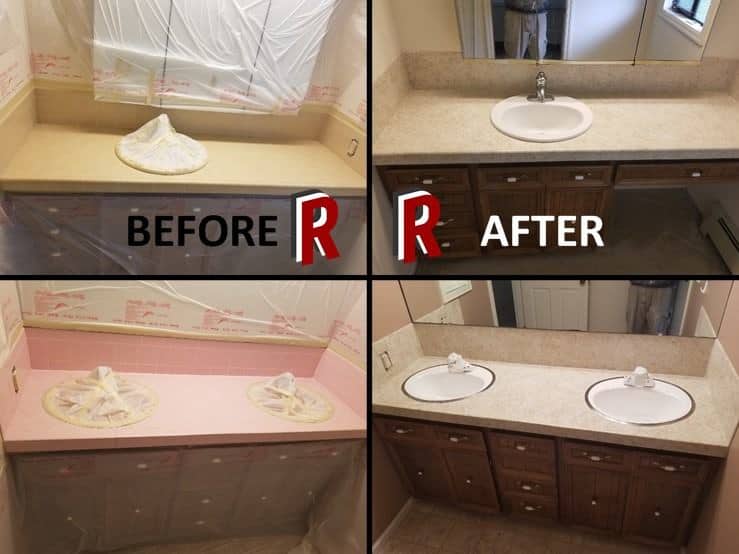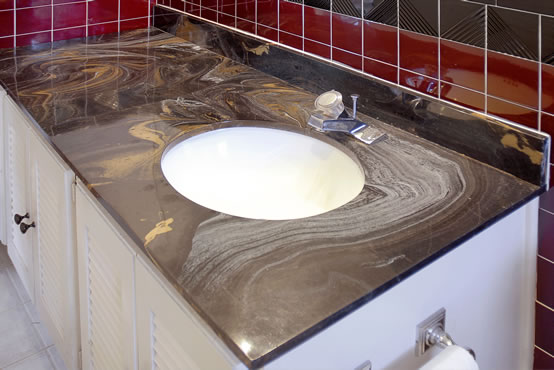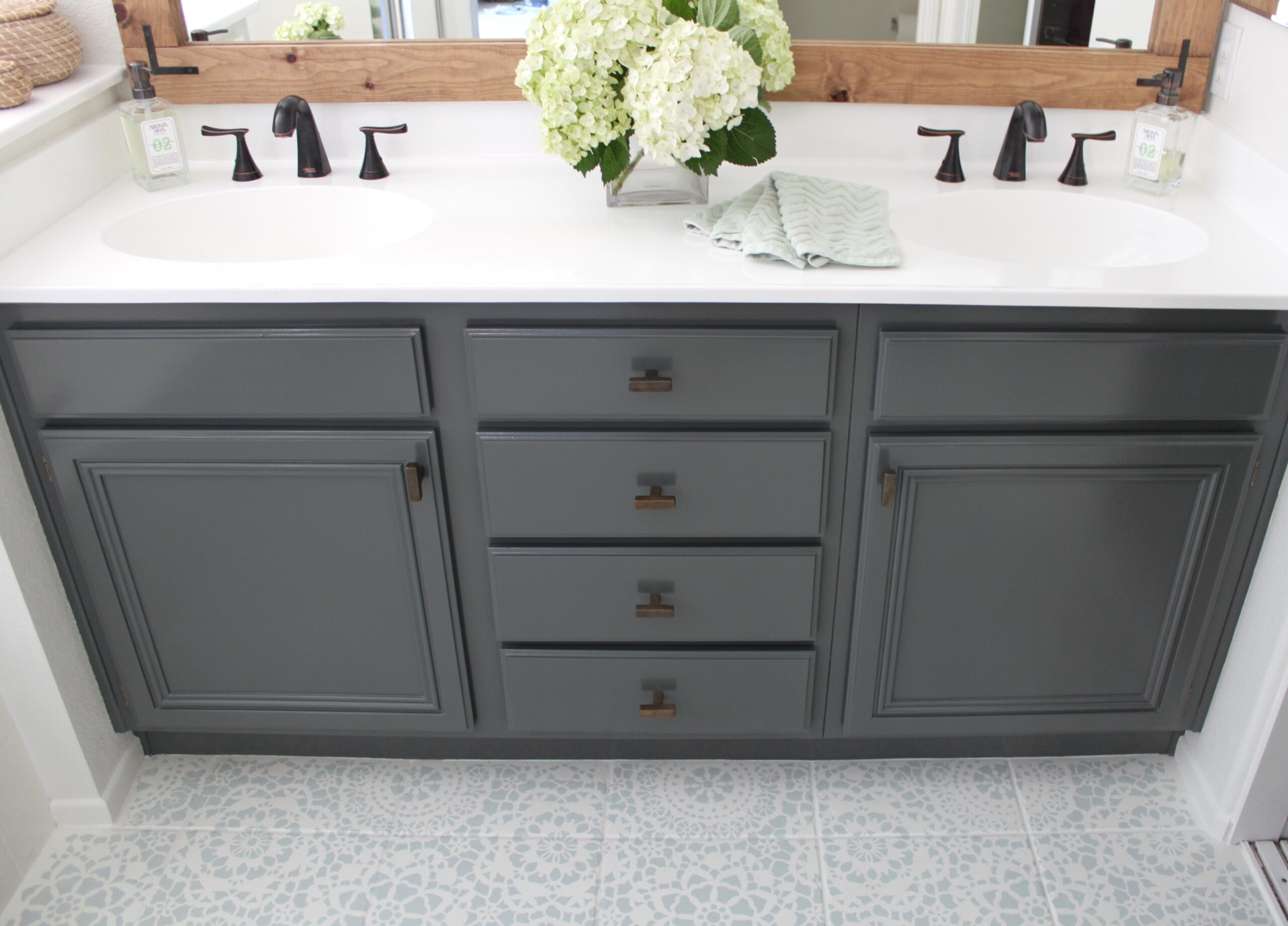Resurfacing bathroom countertops is a great way to breathe new life into an older space without undergoing a full remodel. This process involves applying a new surface layer over an existing countertop, which can restore its appearance, address stains, and cover minor damage like scratches or chips. Resurfacing is popular for bathrooms because it’s cost-effective, environmentally friendly, and allows you to customize the look of your countertop. For anyone looking to revitalize their bathroom space without investing in a full replacement, resurfacing can be an ideal solution.
The process begins with choosing the right resurfacing method, and there are several options to consider depending on the material of your current countertop. If you have a laminate countertop, for instance, a resurfacing kit designed for laminate may work best. These kits generally include primer, paint, and a topcoat to achieve a durable, smooth finish. On the other hand, stone or tile countertops often require epoxy or special paint products designed for high durability. Understanding what products work best for your specific countertop material is essential to achieving a lasting and attractive finish.
Before applying any new surface, the old countertop must be thoroughly cleaned and prepped. This step is critical to ensuring the resurfacing materials adhere properly. Start by using a mild detergent or degreaser to remove any soap scum, dirt, or residue. A smooth surface is essential, so after cleaning, lightly sand the countertop to remove any rough patches or gloss that might prevent proper adhesion. Once sanded, wipe down the surface with a damp cloth to remove any dust or debris. Ensuring a clean, smooth base is vital to achieving professional-looking results.
One popular resurfacing method for bathroom countertops is using epoxy resin, which creates a glossy, durable finish that resembles natural stone. Epoxy can be poured onto the surface and spread with a roller or brush to create an even coat. The resin hardens into a durable surface that’s water-resistant and easy to clean, making it an ideal choice for bathroom use. Epoxy also allows for a wide range of color and design options, including faux stone effects. However, it’s essential to work quickly, as epoxy has a limited working time before it begins to set.

If you prefer a matte finish, countertop resurfacing paint kits are available in various colors and textures. These kits typically include multiple layers: a primer, a color coat, and a protective topcoat. Using a foam roller ensures an even application, while a small brush can help with edges and corners. Countertop paint kits are generally more budget-friendly than epoxy, though they may not be as durable. However, with a protective topcoat, painted countertops can withstand the humidity and daily use typical in a bathroom.
Tile resurfacing is another option for those with tile countertops. Rather than replacing the tiles, a coating or refinishing paint can be applied to create a smooth, unified surface. The grout lines can either be filled in for a flat surface or painted over to maintain the tiled look. The downside of this approach is that the grout will need more upkeep than the tiles themselves, as grout is more porous and susceptible to staining. However, tile resurfacing can create a fresh, modern look, especially when using lighter colors or high-gloss finishes.
Resurfacing also allows for customization in ways that replacing a countertop may not. For example, you can create unique color blends with epoxy by mixing pigments or adding metallic flakes for a shimmer effect. You can also use stencils to add designs or patterns to the countertop, giving it a personalized look. This level of customization means you can achieve a high-end look without the high cost of replacing the countertop with natural stone or other premium materials.

Once the new surface has been applied, curing time is crucial. For epoxy, this can take anywhere from 24 to 72 hours, depending on the product. During this period, avoid using the countertop or exposing it to water, as this can affect the finish. Patience is key, as a well-cured countertop will be more durable and resistant to wear. Even after the curing period, be mindful with the countertop for the first few days to ensure it sets fully.
Regular cleaning is essential to maintain the resurfaced countertop. Avoid abrasive cleaners, as they can scratch or wear down the finish over time. Stick to mild soap and water for daily cleaning, or use a cleaner specifically designed for the type of resurfacing product used. Keeping the countertop dry and promptly cleaning up any spills can also help prolong the finish, especially in a humid bathroom environment.
Resurfacing bathroom countertops also offers an eco-friendly advantage. Rather than discarding an old countertop and contributing to landfill waste, resurfacing reuses the existing material. This reduces the demand for new raw materials, which is especially beneficial when you consider the environmental impact of mining and processing materials like stone. Opting to resurface rather than replace aligns with a sustainable approach to home improvement and can be just as visually impactful as a brand-new installation.
In addition to aesthetics, resurfacing improves the functionality of a bathroom countertop. Many resurfacing products are water-resistant, which protects the countertop from moisture damage and prevents mold and mildew growth. This is especially beneficial in bathrooms, where high humidity levels and frequent water exposure are common. Resurfaced countertops are also easier to clean, as the new finish tends to be smooth and non-porous, unlike older, worn surfaces that can harbor bacteria and grime.

For those who enjoy DIY projects, resurfacing a bathroom countertop can be a satisfying experience. It requires a few tools—such as a foam roller, paintbrush, and possibly a sander—but the process is relatively straightforward. DIY kits provide detailed instructions, making it accessible even to those with limited home improvement experience. However, attention to detail is essential, especially in ensuring an even, bubble-free surface when applying epoxy or paint.
If you’re interested in a complete bathroom makeover, resurfacing the countertop is an excellent starting point. It can provide an immediate, noticeable upgrade that complements other changes, such as repainting the walls or updating the hardware. Even if a full remodel isn’t in the budget, refinishing the countertop can give the bathroom a fresher, more modern look without a major investment. This small update can make a big difference in how the space feels and functions.
Last, one of the key benefits of resurfacing bathroom countertops is the cost savings. Replacing a countertop, especially with high-end materials, can be expensive. Resurfacing achieves a similar aesthetic for a fraction of the cost, making it an affordable option for homeowners. The cost of a resurfacing kit is generally much lower than a replacement, and you can achieve the look of granite, marble, or quartz without the premium price tag.

Common Mistakes to Avoid:
Skipping Surface Preparation: Thoroughly cleaning and sanding the countertop is essential. Skipping this step may prevent the resurfacing material from adhering properly, resulting in peeling or bubbling.
Not Allowing Adequate Drying Time: Each layer needs to dry fully before applying the next one. Rushing the process can cause the surface to remain tacky or lead to uneven finishes.
Using Abrasive Cleaners Post-Resurfacing: Once resurfaced, the countertop is durable but not invincible. Harsh cleaners can wear down the finish over time, so use gentle products.
Ignoring Ventilation During Application: Many resurfacing products have strong fumes. Work in a well-ventilated area or use a respirator to avoid inhaling these potentially harmful fumes.
Underestimating Curing Time: For epoxy, in particular, the curing time is crucial. Premature use can lead to damage, so it’s essential to follow product instructions.
Skipping Protective Layers: For paint-based resurfacing kits, the topcoat is essential for durability. Skipping this step will leave the surface vulnerable to scratches and water damage.

How long does a resurfaced countertop last?
With proper care, a resurfaced countertop can last several years. Using mild cleaning products, avoiding abrasive sponges, and applying protective layers can help maintain the surface and extend its life. The exact lifespan depends on the materials used and how much wear and tear the countertop experiences daily.
Can I resurface my countertop without any DIY experience?
Yes, most countertop resurfacing kits are designed for DIY use, even for beginners. Kits typically include detailed instructions and all necessary tools. However, taking your time, following each step carefully, and working in a well-ventilated area will lead to the best results.
Is resurfacing my bathroom countertop safe for my family?
Once cured, resurfaced countertops are generally safe for everyday use. During the application process, it’s best to keep the area ventilated to minimize exposure to fumes. Once fully cured, the surface is water-resistant and non-toxic, making it safe for family use.

What’s the best way to clean a resurfaced countertop?
Mild soap and water are generally recommended for cleaning a resurfaced countertop. Avoid harsh or abrasive cleaners, as they can scratch the surface. Additionally, dry the countertop after cleaning to prevent water spots and maintain the finish.
Can I resurface any type of countertop?
Most countertops, including laminate, tile, and stone, can be resurfaced. However, it’s essential to choose a resurfacing kit compatible with your specific countertop material. Each material has unique properties that affect how the resurfacing product will adhere.
How much does it cost to resurface a bathroom countertop?
The cost of resurfacing a countertop is significantly less than replacing it. Kits range from $50 to $200 depending on the material and finish you want. This makes resurfacing an affordable option for updating a bathroom without a significant investment.

Cultured Marble Resurfacing Marble countertops bathroom, Marble

How to Resurface Countertops

Related articles: